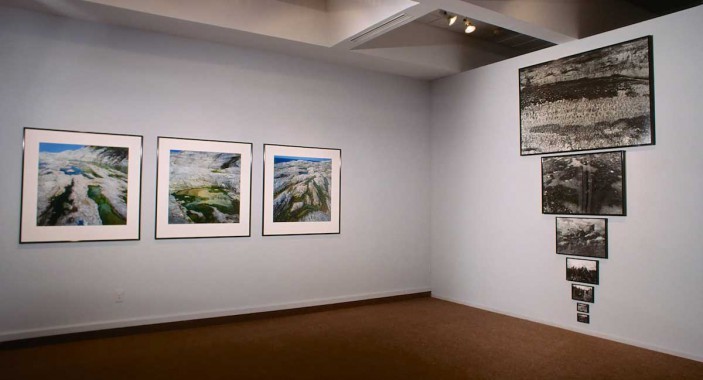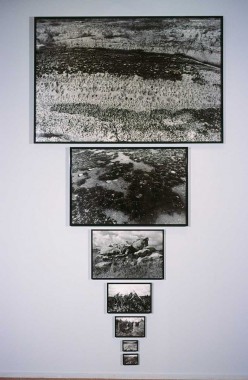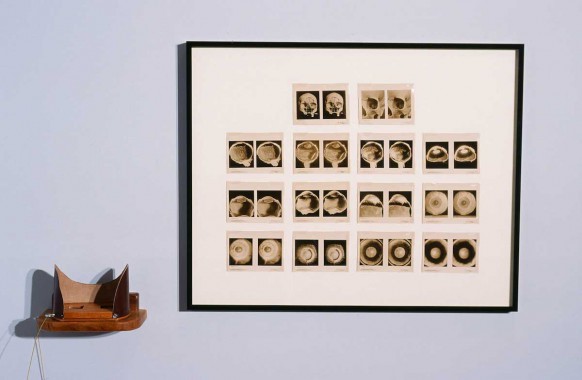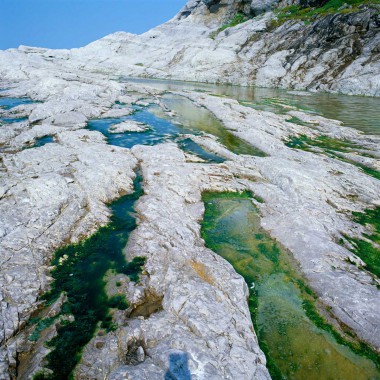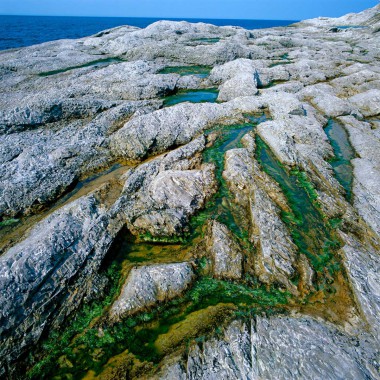True Nature
Multi-media installation, 3 components
Inspired by the limestone barrens of the Great Northern Peninsula of Newfoundland and Labrador and the Bruce Peninsula of Ontario, I am interested in exploring the nature of landscape as it relates to our perception, sense of self, and how the combination of these informs our behaviour.
Quotations, thoughts and questions I was pondering when creating the work:
“Exterior environmental sustainability is clearly needed; but without a growth and development in the interior domains to worldcentric levels of values and consciousness, the environment remains gravely at risk. Those focusing only on exterior solutions are contributing to the problem. (We need) ever-greater consciousness with an ever-wider embrace, which is realized in self, embodied in nature, and expressed in culture.” Ken Wilber, Intro to Integral Theory and Practice, www.integralnaked.org p.38/40
1) Waves and Particles, Burnt Cape, Nfld, 2004
3 fuji crystal archive colour photos
Sea creatures feed on the algae. When they die their exo-skeletons fall to the botttom of the ocean, accumulate and compress over time into these limestone barrens. A sea of inter-relational becoming.
“Physics teaches us that we may look upon events in terms of particles (things, entities) or waves (movement, process). To acknowledge only one of these viewpoints is to miss the real situation.”
Shinzen Young, Journal of Transpersonal Psychology, 1990, 22, 149-165.
How do the landscape, and photographs of the landscape, differ when they’re experienced in the fixed, particulate form or through the fluidity of its/our wave nature? What is the process that is looking? What happens when who is looking and what is being looked at become inextricably interwoven?
2) 1,1,2,3,5,8,13, Bruce Peninsula, 2004
7 black and white photos
These are the Fibonacci numbers, a ratio of patterning found as a prevalent tendency in different kinds of plant growth. I think of the Fibonacci series as reflecting the unseen primordial organizing growth process. Some of the “landscapes” in these photos are privately owned and inhabited, others publicly owned and uninhabited, others are protected as a reserve or as a tourist site, one is private and farmed, another is privately protected and and it is unknown whether the remaining two are protected or not.
“It is generally the case that matter and energy of which things are composed have the potential to be present in many different forms, and so these forms cannot fully be explained just in terms of their material constituents and the energy within them. The form seems to be something over and above the material components that make it up, but at the same time it can be expressed through the organization of matter and energy.”
Rupert Sheldrake, The Presence of the Past: Morphic Resonance & The Habits of Nature, Inner Traditions Intl. Ltd., 1995, p. 58.
3) Dark Night, Skull and Human Eye Dissected, 2004
14 black and white silver gelatin stereoviews from Prof. Arthur Thomson’s Anatomy of the Human Eye, 1912, with shelf and stereoviewer
Taken from the mystic St. John of the Cross’s poem The Dark Night, especially the lines “suspending all my senses,” and “all things ceased.” From the Collected Works of St. John of the Cross, translated by Kieran Kavanaugh and Otilio Rodriguez, (Washington, D.C.: ICS Publications, 1991), p. 50-52.
When the senses are “suspended”, and “all things cease,” what remains of the inner and outer landscape? Who are we then? How might this inform how we act in the evolving world of nature/culture?
Har-Prakash Khalsa
